Data Shows Australia’s Rapid Shift Toward EVs by 2035

The Australian automotive market is shifting gears toward clean energy faster than ever, signalling a new era for transportation. In just two years, a dramatic change has unfolded, ICE car sell fell by 15%. By 2035, BEV and hybrid cars are projected to dominate with over 90% of the market share, showcasing the country’s commitment to sustainable mobility and a cleaner future.
Current Trends in the Australian Automotive Market: Q2 2022 vs Q2 2024
Australia’s automotive market is rapidly changing, with clean energy vehicles gaining significant traction. Let’s look at the shift in vehicle market share between Q2 2022 and Q2 2024:
- Internal Combustion Engine (ICE) vehicles: In Q2 2022, ICE vehicles held a dominant 90.3% of the Australian car market. However, by Q2 2024, this share dropped to 75.5%. This 15% drop is a clear indication of changing consumer preferences, driven by both environmental awareness and the increasing availability of alternatives.
- Battery Electric Vehicles (BEVs): BEVs, though still a small portion of the market in 2022 at 1.12%, have grown substantially to 8.1% in 2024. This growth signifies the increasing adoption of electric vehicles (EVs) as Australia embraces cleaner energy options.
- Hybrids: Hybrid vehicles (including PHEV) have seen a significant increase, rising from 9.2% in 2022 to 24.5% in 2024. The rise of hybrids suggests that many Australians are opting for vehicles that offer a balance between fuel efficiency and electric power, especially in the transition toward full electric adoption.
Back in Q2 2022, Australia’s roads were dominated by internal combustion engine (ICE) vehicles, which made up 90.3% of all car sales. Battery electric vehicles (BEVs) were barely visible at just 1.12%, while hybrids held a modest share of 8.5%. But change was brewing. By Q2 2024, ICE vehicle sales had dropped to 75.5%, with BEVs climbing to 8.1% and hybrids making a significant jump to 16.4%. The numbers tell a story of Australia’s growing commitment to cleaner transportation and a shift in consumer priorities.
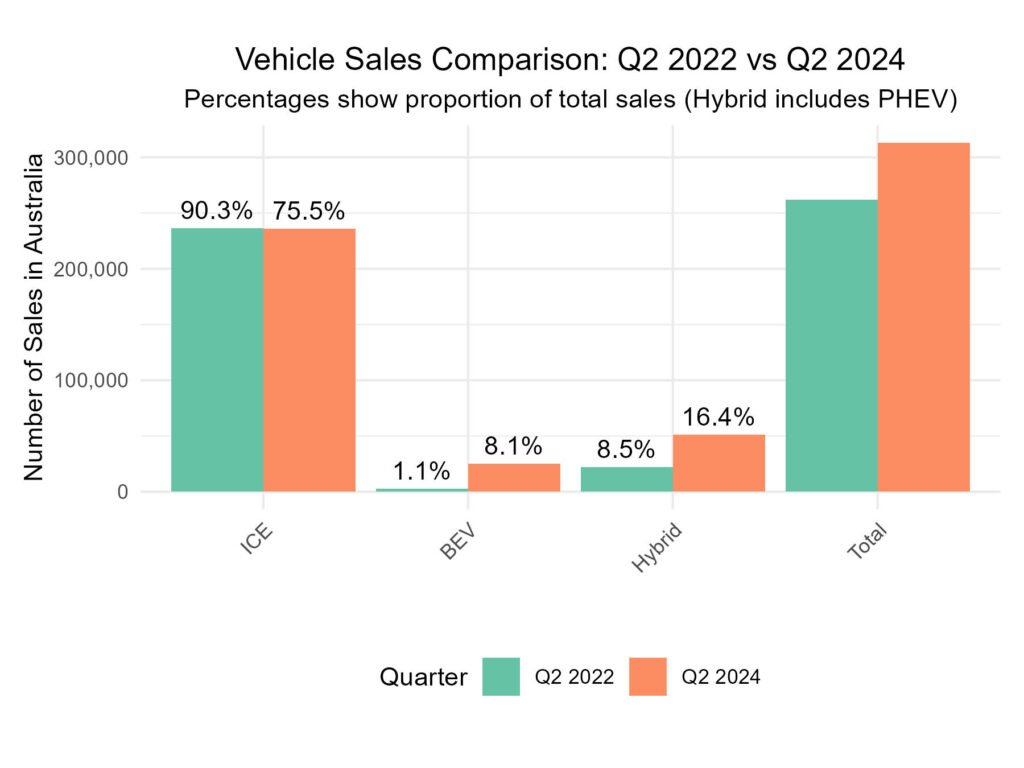
The Future of Electric Vehicles in Australia: BEVs, Hybrids, and PHEVs Set to Dominate by 2035
Looking ahead, Australia is poised to see Battery Electric Vehicles (BEVs), Plug-in Hybrid Electric Vehicles (PHEVs), and Hybrids taking a dominant position in the market by 2035, with over 90% of the market share projected for clean energy vehicles. Here’s what the future holds:
- Hybrids & PHEVs: While BEVs are expected to capture a larger share, hybrids and PHEVs will still play a crucial role, contributing to the shift towards cleaner energy. PHEVs, which offer the flexibility of both electric and gasoline power, are expected to become a key choice for Australian consumers. By 2035, hybrids and PHEVs combined are projected to capture nearly 50% of the market share, reflecting a growing preference for vehicles that offer both fuel efficiency and reduced emissions.
- BEVs: Projections indicate that BEVs will make up 30% of all car sales by 2035. This is a significant leap from their current share, signaling strong momentum towards a fully electric future. The chart below illustrates this projected growth, highlighting a steady increase in BEV market share from 5% in 2022 to 30% by 2035.The rise of BEVs is expected to accelerate as consumers increasingly demand cleaner, more sustainable transportation options, and as EV infrastructure (e.g., charging stations) continues to expand.
BEV Market Forecast for Australia: Projected Growth Toward 30% by 2035
As shown in the chart below, the BEV market share in Australia is expected to increase significantly over the next decade. From just 5% in 2022, BEVs are projected to rise to 30% by 2035. This growth is fueled by factors such as government incentives, improving EV infrastructure, and growing consumer interest in sustainable options.
- The blue line in the graph represents actual market share data, while the red dashed line shows the projected trajectory. This visual reinforces the steady growth in BEV adoption.
This suggests a major shift toward electric mobility in Australia, aligning with global trends of reducing carbon emissions and moving toward sustainable transportation solutions. It is also worth noting that countries like Norway, Sweden, and the Netherlands have already surpassed the 30% mark, with Norway exceeding 80%. While Australia is behind this trajectory, it is progressing at a much slower pace.
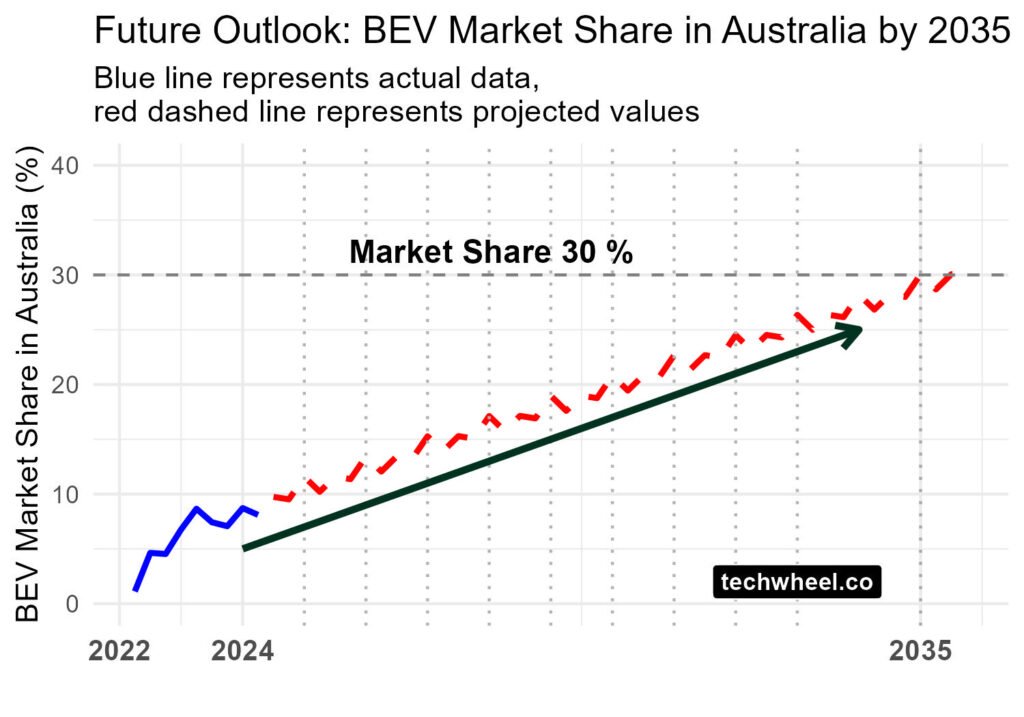
Hybrid and PHEV Contribution: Paving the Way for a Greener Future
In the transition to a cleaner, greener transportation system, hybrids and PHEVs are playing a pivotal role. While BEVs represent the future, hybrids and PHEVs are helping bridge the gap by providing a more immediate, practical solution for consumers:
PHEVs are growing in popularity as they combine the benefits of electric and gasoline power, providing flexibility for longer trips without the anxiety of running out of charge. By 2035, PHEVs are expected to account for nearly 50% of the total market, showing strong consumer demand for vehicles that offer both energy-efficient options and extended driving range.
Hybrid vehicles, with both electric and combustion engines, currently hold a larger share of the market, making up 16.4% by Q2 2024. They offer significant fuel efficiency improvements and a smoother transition for consumers not ready to commit fully to BEVs.
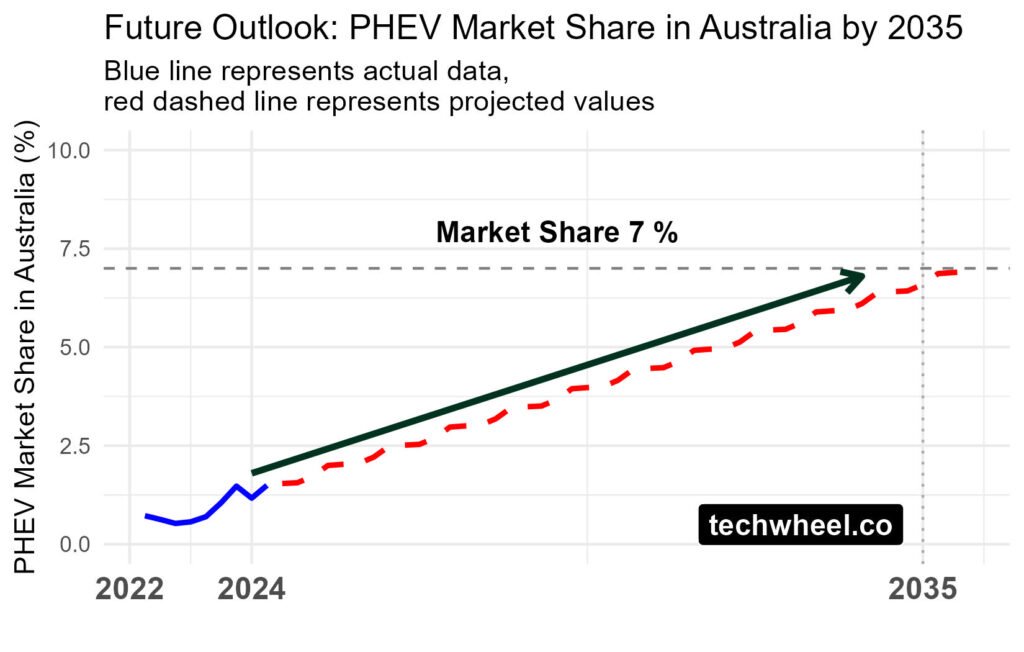
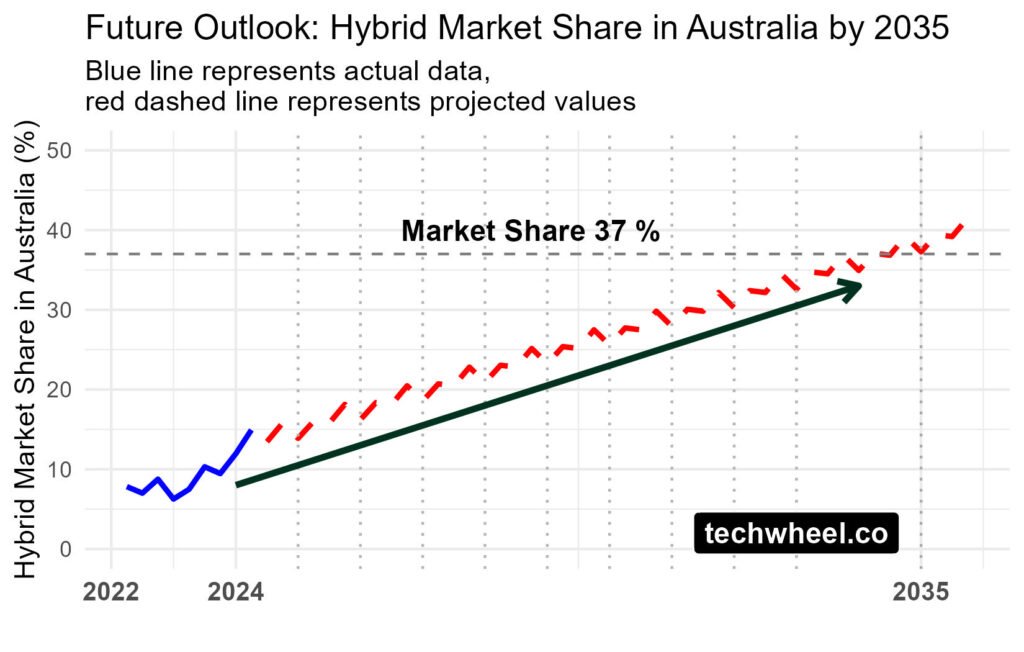
The Decline of ICE Vehicles in Australia: A Shift to Sustainable Mobility
The most striking trend in the Australian market is the projected decline of Internal Combustion Engine (ICE) vehicles. From a dominant 90% share in 2022, ICE vehicles are expected to fall to just 6% of the market by 2035. This suggests a major transformation as Australian consumers embrace cleaner, more sustainable transportation options.
The graph below shows the steady decline in the market share of ICE vehicles, highlighting a significant shift toward electric and hybrid vehicles:
- Blue line shows actual ICE vehicle market share.
- Red dashed line illustrates the projected future decline.
This shift is influenced by several factors:
- Rising fuel costs
- Environmental concerns surrounding climate change
- Improved electric vehicle options offering longer ranges and more accessible prices
As EV adoption continues to grow, ICE vehicles will likely become a niche segment, much like diesel vehicles are today.
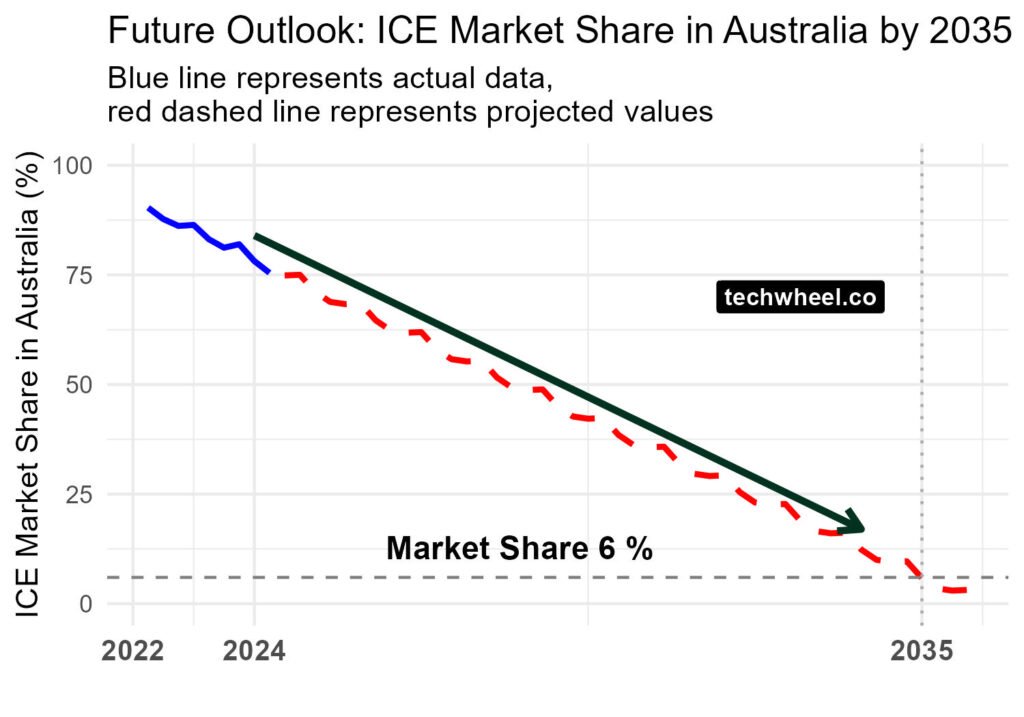
Conclusion: A Cleaner, Greener Future Ahead
Australia is on the cusp of a major automotive revolution. With BEVs, hybrids, and PHEVs set to dominate by 2035, the Australian automotive market is moving toward a more sustainable and cleaner future. This transition not only supports environmental goals but also reflects a broader shift in consumer preferences towards energy-efficient, low-emission vehicles.
Stay informed about this ongoing transformation and track the latest trends in Australia’s automotive landscape right here on Techwheel.
Disclaimer
The data presented in this post is sourced from the Federal Chamber of Automotive Industries and was published by the Australian Automobile Association. The figures reflect quarterly sales data for the entire Australian automotive market.
The author has applied a forecasted model in this post, which is derived from a time series forecasting approach designed to predict future trends based on historical data. However, it is important to note that all forecasts come with inherent uncertainty. The author acknowledges that variables such as changes in government policies, technological advancements, and other unforeseen factors can significantly influence these projections.
While the forecast provides valuable insights, the author emphasizes that the future trajectory of the automotive market remains subject to various unpredictable influences, and actual outcomes may vary.
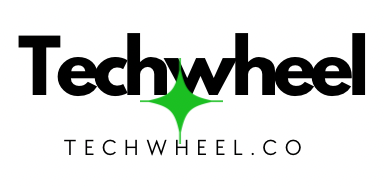


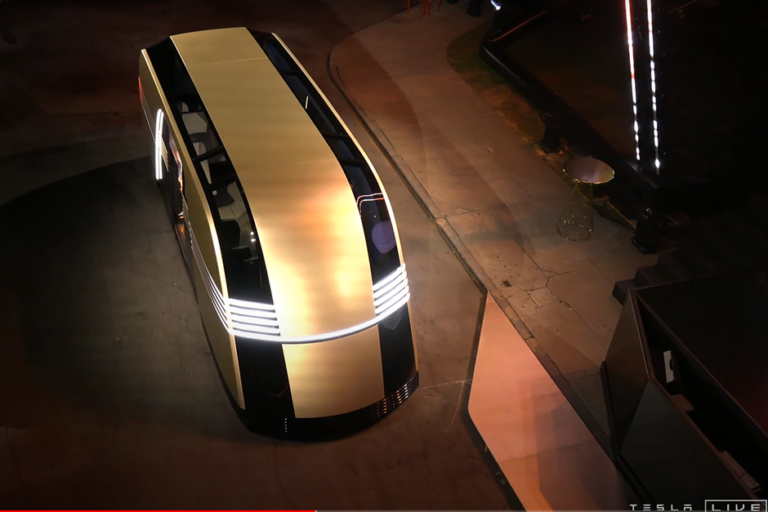
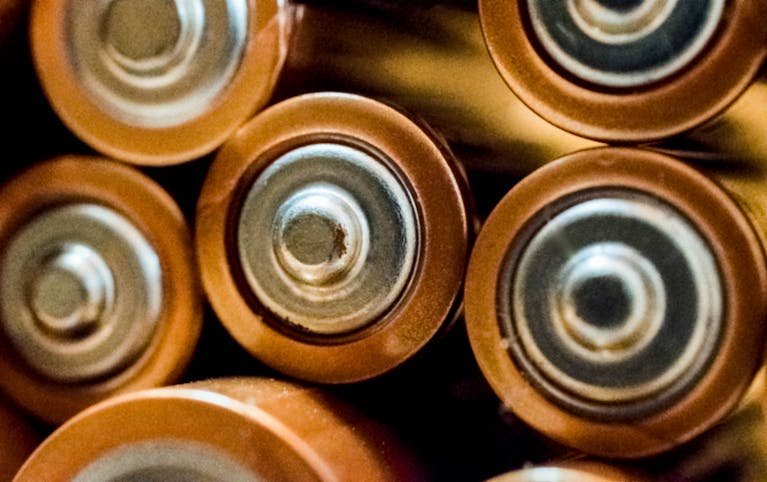

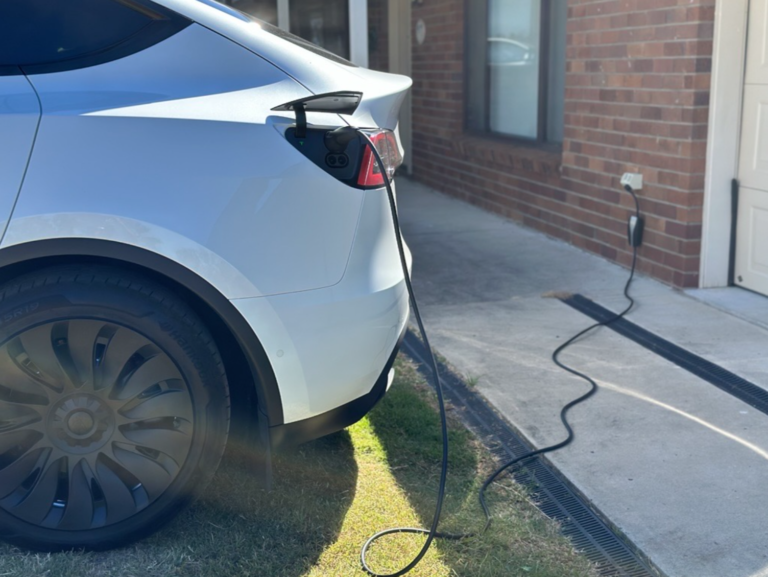
“Thanks for sharing such valuable information!”
“Standing ovation! 🌠 This post perfectly balances depth with accessibility. Your thorough research and expert explanations make this an invaluable resource. Keep up the amazing work!”
“I can’t express how valuable this post is! The level of detail and thoughtful explanations demonstrate your mastery of the subject. Truly a goldmine of information.”